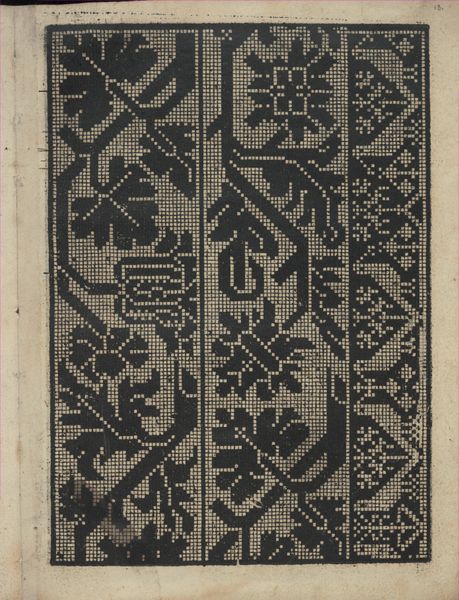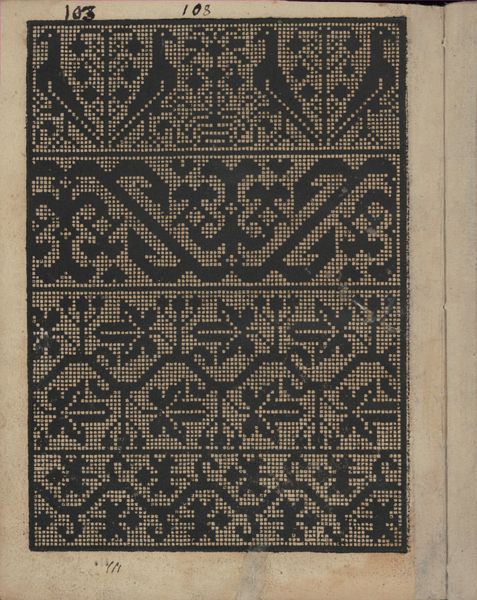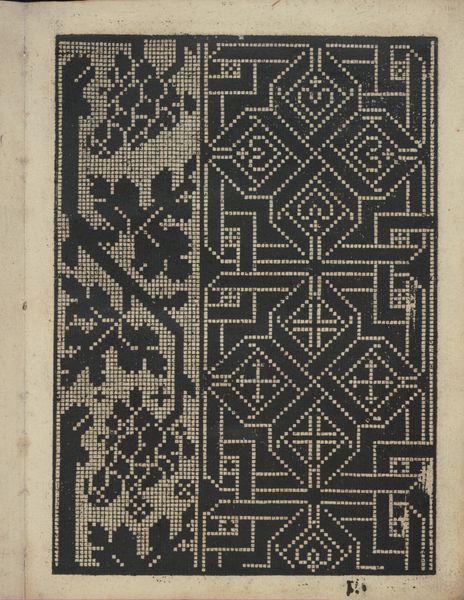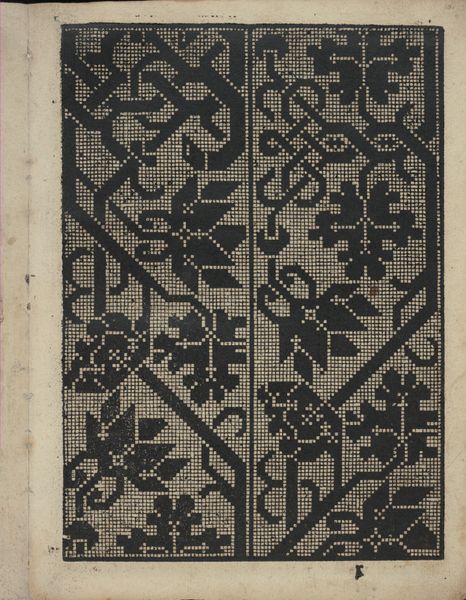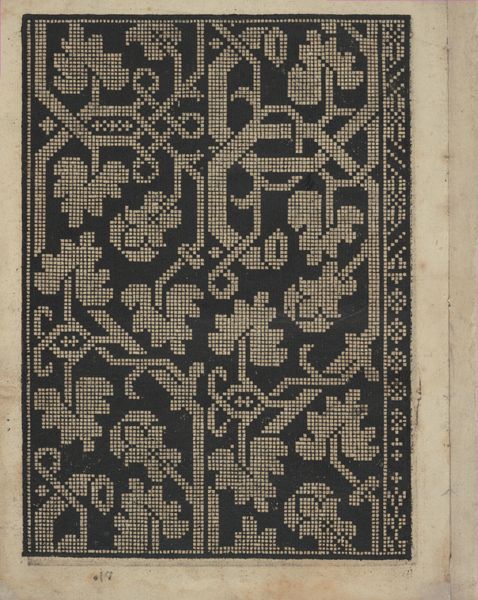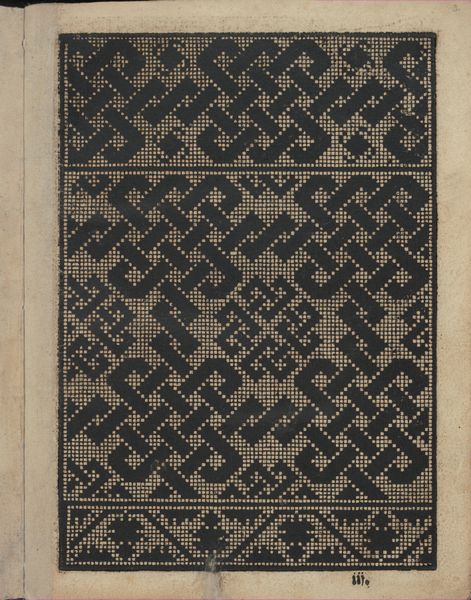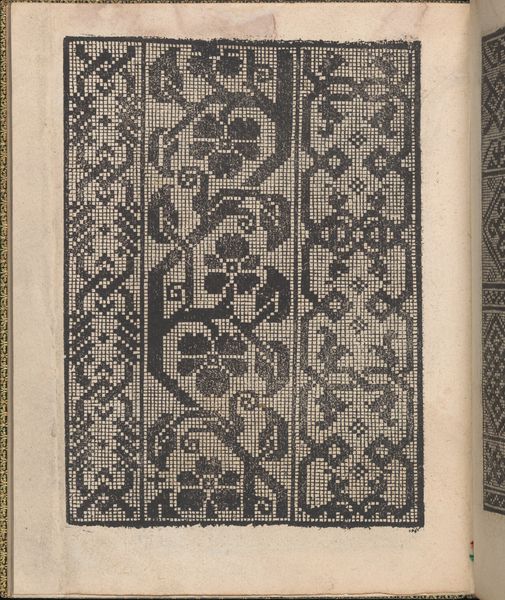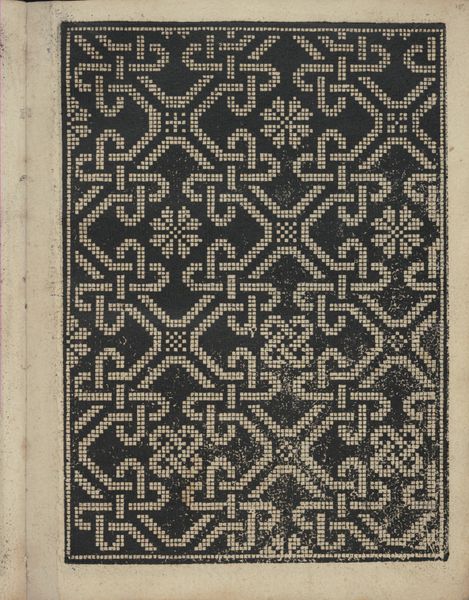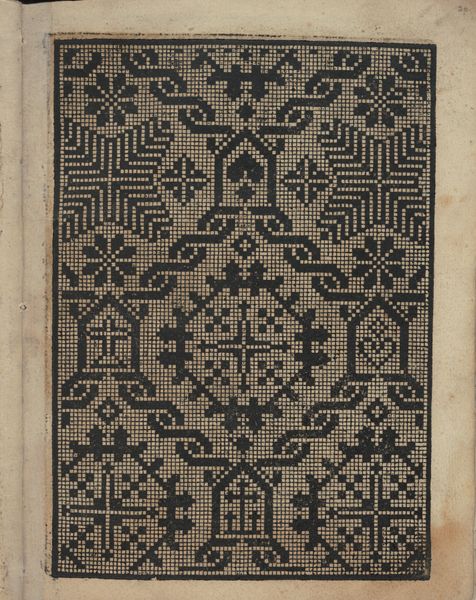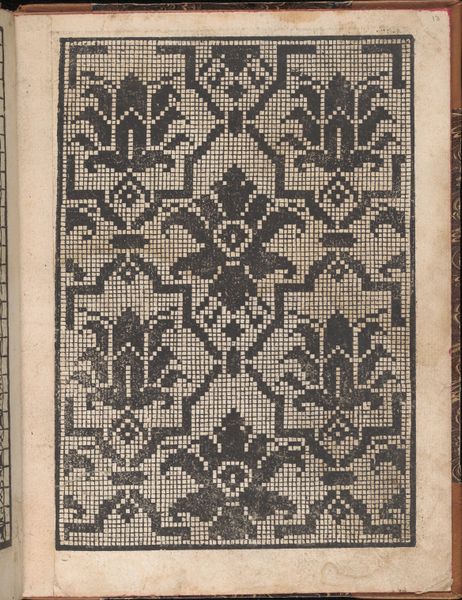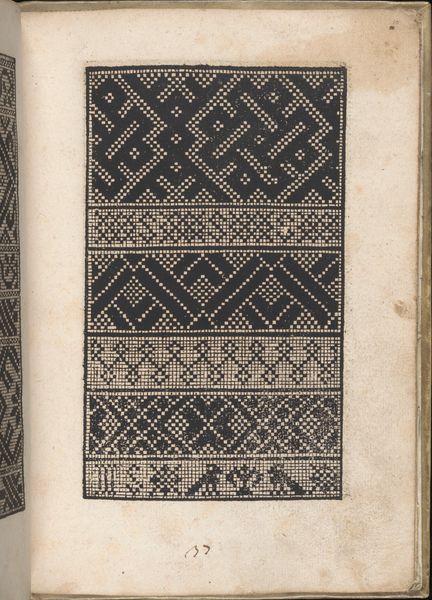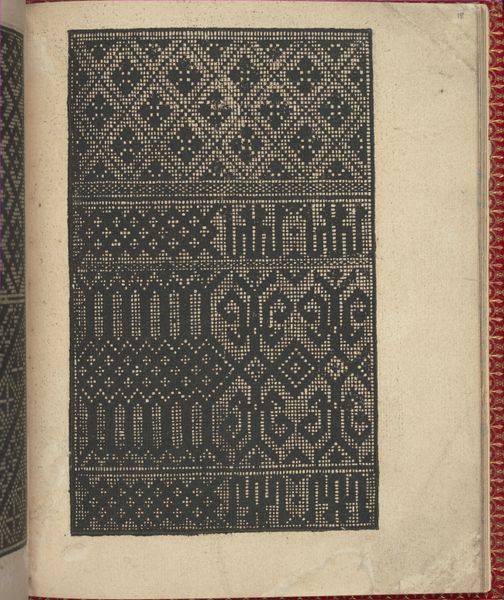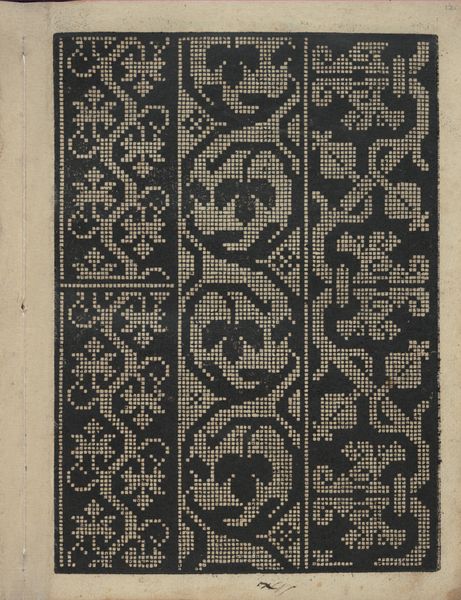
Libbretto nouellamete composto per maestro Domenico da Sera...lauorare di ogni sorte di punti, page 4 (recto) 1532
0:00
0:00
drawing, print
#
drawing
# print
#
book
#
pattern
#
11_renaissance
#
linocut print
#
geometric
Dimensions: Overall: 8 1/16 x 6 5/16 in. (20.5 x 16 cm)
Copyright: Public Domain
Curator: Let's turn our attention to this fascinating page from "Libbretto nouellamete composto per maestro Domenico da Sera…lauorare di ogni sorte di punti," a print by Domenico da Sera from 1532. It's currently held at the Metropolitan Museum of Art. Editor: Wow, that's intricate. My first thought is just how methodical it seems; a dedication to craft. All those tiny, deliberate marks…it feels almost meditative. The texture, the way the black and white interact, gives it real visual weight. Curator: Absolutely. It's essentially a pattern book, a guide to various needlepoint designs during the Renaissance. Think of it as an early form of mass-produced instruction, influencing textile arts across social classes. This challenges conventional views by presenting a manual focused on everyday practices. Editor: Yes! You see it, too. I was thinking about that intersection of practicality and artistic intention. Looking closely, you can see how each little square pixel contributes to the larger image. What material were these patterns printed on originally, and what would it have felt like to handle? The labour is tangible; almost feels democratic! Curator: Likely printed on paper. The real value here, I believe, is that it gave people a means to not only learn needlepoint, but to engage with contemporary styles. It offered a kind of accessible participation in larger trends in courtly fashion for the budding middle class. It is one thing to copy or reproduce images, quite another to actively promote aesthetic exchange between social levels! Editor: I think you’re absolutely right. Seeing those zig-zag patterns and botanical motifs repeated like that, all precisely aligned... it underscores the labor and the incredible patience that went into textile production at the time, and perhaps also its accessibility through the printed pattern. You realize then, that while Domenico da Sera has a name, we only know the people by the items that were made with this manual. Curator: Agreed, this one printed page reminds us of the intersection between accessibility, education, and commerce. A simple drawing providing a window into a much wider cultural and societal phenomenon. Editor: Precisely. I'll be leaving this with an even greater appreciation for the everyday materials and unseen makers behind the decorative objects around us.
Comments
No comments
Be the first to comment and join the conversation on the ultimate creative platform.
